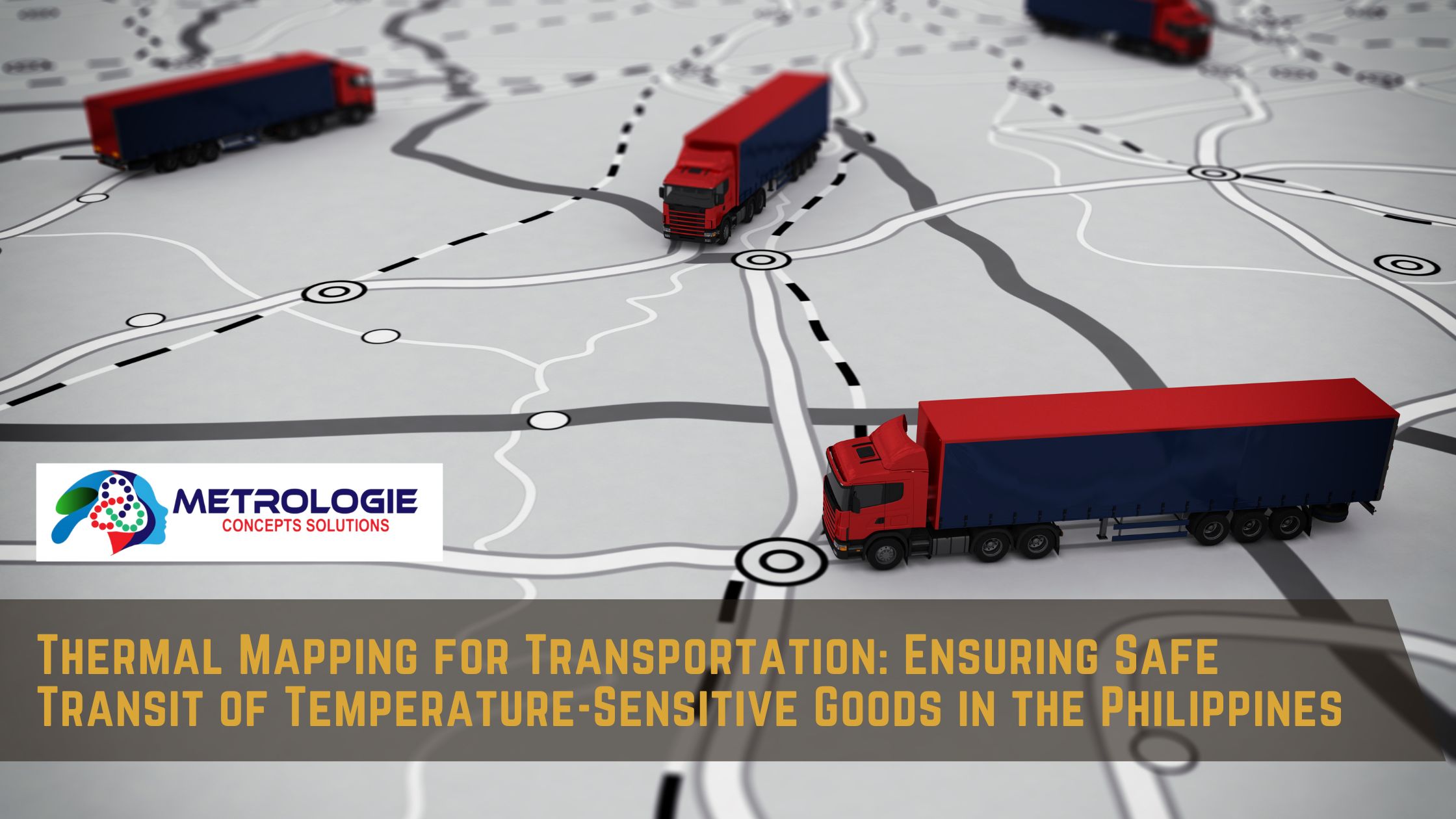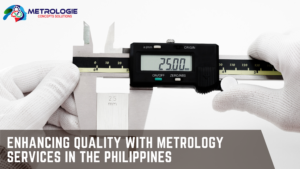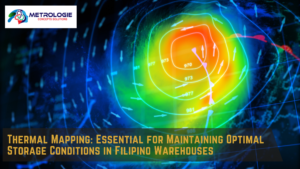Introduction
In the Philippines, transporting temperature-sensitive goods is a vital aspect of many industries, particularly in food, pharmaceuticals, and healthcare. The country’s warm tropical climate, paired with the logistical challenges of navigating an archipelago, adds complexity to this task. Ensuring that temperature-sensitive goods—such as fresh produce, dairy products, medicines, and vaccines—arrive safely at their destination requires careful management and monitoring throughout the transportation process.
This is where thermal mapping comes into play. Thermal mapping for transportation helps businesses and logistics providers maintain optimal temperature conditions during transit, ensuring that products are not compromised. This article will explore the importance of thermal mapping, the steps involved in the process, and how businesses in the Philippines can leverage it to protect their goods and meet regulatory standards.
1. Understanding Thermal Mapping for Transportation
Thermal mapping is a process that monitors and records temperature distribution across a space—whether a vehicle, warehouse, or container—to identify temperature variations. It’s essential for maintaining the required temperature range for goods that are sensitive to temperature fluctuations.
a. What Is Thermal Mapping?
Thermal mapping for transportation involves installing sensors throughout a vehicle or container to monitor temperature and identify any potential hot or cold spots. These sensors capture temperature data at different points, providing an accurate picture of how well the temperature-controlled environment maintains its set conditions during the journey.
b. Why Is It Important for Transportation?
Temperature-sensitive goods, such as pharmaceuticals, perishable food items, and chemicals, need to be transported in specific temperature ranges to remain effective or safe. If the goods are exposed to temperatures outside their safe range, they may spoil or lose efficacy, which can have serious consequences. For example:
- Food products may spoil, leading to safety hazards for consumers.
- Pharmaceuticals like vaccines and medicines can lose their effectiveness, posing health risks.
- Cosmetics and other temperature-sensitive products may deteriorate, leading to a poor consumer experience.
Thermal mapping helps prevent these issues by ensuring that temperature-sensitive products are kept within the required range throughout the journey. This is especially crucial in the Philippines, where varying temperatures and humidity levels can make it challenging to transport goods safely.
2. Industries That Benefit from Thermal Mapping in the Philippines
Thermal mapping plays a crucial role in various industries that require tight control over temperature-sensitive products during transportation. Below are some key sectors in the Philippines that rely heavily on this technology.
a. The Food and Beverage Industry
The food industry is one of the primary beneficiaries of thermal mapping, particularly in a tropical country like the Philippines. Food safety is a top concern for businesses that transport perishable goods, such as fruits, vegetables, dairy products, meats, and seafood.
- Farm to Fork: The journey from farm to fork is critical for food safety, especially for perishable goods. Thermal mapping ensures that fresh produce remains at the right temperature during transportation, preventing spoilage and maintaining the quality and safety of food products.
- Cold Chain Logistics: Cold chain logistics, which involves maintaining temperature control during the transportation of perishable goods, is essential for the food and beverage industry. Any breach in the cold chain can lead to food spoilage, resulting in financial losses and safety hazards.
b. The Pharmaceutical Industry
The pharmaceutical sector requires strict temperature control, especially when transporting medicines, vaccines, and biological products that are sensitive to heat and cold.
- Vaccine Transport: The importance of maintaining strict temperature control during vaccine transport has been highlighted by the COVID-19 pandemic. Vaccines must be stored and transported within a narrow temperature range to remain effective, making thermal mapping an indispensable tool.
- Medical Supplies: Many medical supplies, including blood products and medications, also require temperature monitoring during transit to ensure their efficacy is maintained. Any deviation from the set temperature range can render these supplies useless or harmful.
c. The Chemical Industry
Certain chemicals are highly temperature-sensitive and can become dangerous if exposed to temperatures outside their recommended range. For instance, chemicals used in manufacturing, pharmaceuticals, or cosmetics can react negatively to heat or cold.
- Hazardous Materials: The safe transport of hazardous materials often relies on maintaining strict temperature controls, and thermal mapping can help ensure compliance with safety regulations.
3. Steps Involved in Thermal Mapping for Transportation
Thermal mapping for transportation involves a series of steps to ensure accurate and comprehensive data collection and analysis. These steps help logistics providers understand how well their temperature-controlled vehicles or containers perform during transit and whether any improvements are needed to ensure product safety.
a. Initial Risk Assessment
Before thermal mapping begins, it’s essential to conduct a risk assessment. This involves identifying the types of goods being transported, their temperature sensitivity, and any potential risks during transit.
For example, transporting dairy products in the hot, humid climate of the Philippines presents specific challenges that must be addressed. A risk assessment helps logistics providers understand these challenges and develop a plan to mitigate them.
b. Installing Temperature Sensors
The next step is to install temperature sensors in strategic locations within the vehicle or container. Sensors should be placed in areas where temperature fluctuations are most likely to occur, such as near doors, air vents, or refrigeration units.
These sensors will monitor temperature variations during transit, providing real-time data on the thermal conditions inside the transport environment.
c. Data Collection and Monitoring
Once the sensors are in place, the vehicle or container is subjected to normal operating conditions. Temperature data is collected continuously over a defined period, usually covering both empty and full load conditions, as well as during loading and unloading. This helps create a complete picture of the temperature performance under various scenarios.
d. Data Analysis
After data collection, it’s time to analyze the results. By reviewing the temperature data, logistics providers can identify any areas where the temperature is consistently too high or too low. This step is critical for ensuring that temperature-sensitive goods remain within their required temperature range throughout the entire transportation process.
e. Implementing Solutions
If the data analysis reveals any problem areas, logistics providers can implement solutions to address these issues. For example, they may need to adjust the location of air vents, modify refrigeration settings, or improve insulation to ensure a more uniform temperature distribution.
4. Regulatory Compliance and Thermal Mapping
In the Philippines, several regulatory bodies oversee the transportation of temperature-sensitive goods. Compliance with these regulations is critical for businesses that transport food, pharmaceuticals, and chemicals, as failure to meet standards can result in fines, penalties, or the loss of business licenses.
a. Food and Drug Administration (FDA) Regulations
The Philippine FDA enforces strict regulations for the transport of food and pharmaceuticals. For instance, the FDA requires that companies involved in the distribution of perishable food or pharmaceuticals maintain a cold chain system to ensure product safety and efficacy.
Thermal mapping is an essential tool in meeting these requirements. It provides businesses with the necessary data to prove that their transportation methods comply with the temperature control guidelines set by the FDA.
b. International Standards for Temperature-Sensitive Goods
In addition to local regulations, businesses that export temperature-sensitive goods must comply with international standards, such as those set by the World Health Organization (WHO) and Good Distribution Practice (GDP) guidelines for pharmaceuticals. Thermal mapping helps ensure that businesses can meet these global standards, improving their reputation and expanding their market reach.
5. The Economic Benefits of Thermal Mapping in Transportation
Thermal mapping isn’t just about compliance—it also offers significant economic benefits for businesses in the Philippines.
a. Reducing Product Loss
One of the most direct economic benefits of thermal mapping is the reduction of product loss. Spoiled goods due to improper temperature control can lead to massive financial losses. By using thermal mapping to identify and correct any temperature issues during transit, businesses can significantly reduce the risk of spoilage and improve product integrity.
b. Building Trust with Customers
When businesses can ensure the safe delivery of temperature-sensitive goods, they build trust with their customers. Whether it’s a retailer receiving fresh produce or a pharmacy receiving temperature-sensitive medications, customers are more likely to return to a business that consistently delivers safe, high-quality products.
c. Improving Efficiency and Cost Savings
Thermal mapping allows businesses to identify inefficiencies in their transportation processes, such as poor insulation, faulty refrigeration units, or inconsistent air circulation. By addressing these issues, businesses can improve the efficiency of their temperature-controlled transport, leading to cost savings on energy and maintenance.
6. How to Prepare for Thermal Mapping in the Philippines
Preparing for thermal mapping involves several steps to ensure accurate and meaningful results. Whether you’re a logistics provider, a food distributor, or a pharmaceutical company, these preparation tips will help you get the most out of thermal mapping.
a. Choose the Right Equipment
Investing in high-quality temperature sensors is essential for accurate thermal mapping. Make sure that the sensors you choose are reliable, durable, and capable of capturing precise temperature readings in different conditions.
b. Plan Your Mapping Process
Thermal mapping should be planned in advance to cover all possible scenarios, including varying weather conditions, different load capacities, and route variations. If you’re transporting goods across multiple islands in the Philippines, be sure to account for the effects of different climates and journey durations.
c. Work with Experts
Thermal mapping can be a complex process, especially if you’re new to temperature-sensitive transportation. Working with experts, such as specialized thermal mapping consultants, can ensure that your mapping process is thorough and accurate.
Conclusion
In the Philippines, where temperature-sensitive goods are frequently transported across long distances and varying climates, thermal mapping is an essential tool for ensuring product safety and integrity. From food and pharmaceuticals to chemicals, thermal mapping allows businesses to monitor temperature conditions during transit and address any issues before they lead to product loss or regulatory non-compliance.
By implementing thermal mapping in transportation, Filipino businesses can not only protect their goods but also gain a competitive edge in the market. With improved efficiency, reduced product loss, and enhanced customer trust, thermal mapping provides both practical and economic benefits for companies across various industries.




